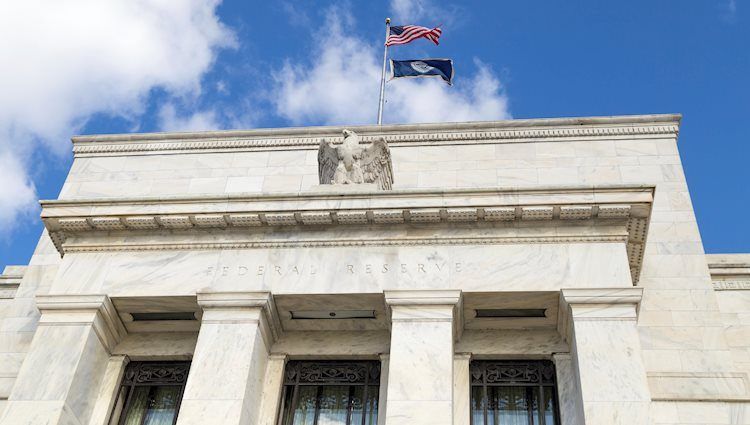The lack of action by Japanese authorities and softer Tokyo CPI also exert pressure.
Traders now look forward to the US PCE Price Index for some meaningful impetus.
The Japanese Yen (JPY) comes under fresh selling pressure after the Bank of Japan (BoJ) announced its policy decision and drops to a fresh multi-decade low against its American counterpart during the Asian session on Friday. As was anticipated, the Japanese central bank decided to leave policy settings unchanged and lowered its growth forecast for the financial year 2024. This comes on the back of any decisive action by Japanese authorities to support the domestic currency, which, along with a generally positive risk tone, turn out to be key factors weighing on the safe-haven JPY.
Meanwhile, the US Dollar (USD) attracts some dip-buying amid hawkish Federal Reserve (Fed) expectations and reverses a part of the previous day’s softer GDP print-inspired fall to a two-week low. Apart from this, expectations that the wide interest-rate differential between Japan and the United States (US) will remain for some time suggests that the path of least resistance for the USD/JPY pair is to the upside. Traders, however, might prefer to wait for the release of the US Personal Consumption Expenditures (PCE) Price Index before placing fresh directional bets.
Government data showed on Friday that consumer inflation in Tokyo decelerated sharply in April, which, along with the Bank of Japan’s decision to maintain the status quo, undermines the Japanese Yen.
The headline Tokyo Consumer Price Index (CPI) rose 1.8% YoY in April, while core CPI (ex-Fresh Food, Energy) increased by 1.8% YoY during the reported month, both missing consensus estimates.
A core CPI gauge that excludes both fresh food and energy prices and is closely watched by the BoJ as a gauge of underlying inflation fell below the 2% target for the first time since September 2022.
The Japanese central bank, as was widely anticipated, left its short-term interest rates unchanged at 0%-0.10% and expects accommodative monetary conditions to continue for the time being.
The BoJ, meanwhile, lowered its economic growth forecast for the current fiscal year 2024 to 0.8% from the 1.2% estimated previously, while CPI ex fresh food for FY 2024 is seen at 2.8% vs 2.4% prior.
The US Commerce Department reported on Thursday that the world’s largest economy grew at a 1.6% annualized rate in the January-March period, marking the weakest reading since mid-2022.
This pointed to a significant loss of momentum at the start of 2024, though was offset by a rise in the underlying inflation, which reaffirmed bets that the Federal Reserve will keep rates higher for longer.
A Jiji report indicated that the BoJ might buy fewer bonds, pushing Japan’s five-year bond yield to the highest level since April 2011, albeit does little to provide any meaningful boost to the JPY.
Japan’s Finance Minister Shunichi Suzuki reiterated that he is closely monitoring FX fluctuations and that he will prepare to take full steps on the currency, though declined to comment on details of the policy.
Meanwhile, traders now seem reluctant and prefer to wait for the crucial BoJ policy decision, which will be followed by the release of the US Personal Consumption Expenditures (PCE) Price Index.
From a technical perspective, momentum beyond the overnight swing high, around the 155.75 zone, has the potential to lift the USD/JPY pair to the 156.00 mark. The latter should act as a strong barrier and cap the upside amid the extremely overbought Relative Strength Index (RSI) on the daily chart, which, in turn, warrants some caution for bullish traders.
On the flip side, the 155.35-155.30 region is likely to protect the immediate downside ahead of the 155.00 psychological mark. This is closely followed by a short-term trading range resistance breakpoint, around the 154.70 area, below which the USD/JPY pair could drop to the 154.00 round figure en route to last Friday’s swing low, around the 153.60-153.55 zone.
The Bank of Japan (BoJ) is the Japanese central bank, which sets monetary policy in the country. Its mandate is to issue banknotes and carry out currency and monetary control to ensure price stability, which means an inflation target of around 2%.
The Bank of Japan has embarked in an ultra-loose monetary policy since 2013 in order to stimulate the economy and fuel inflation amid a low-inflationary environment. The bank’s policy is based on Quantitative and Qualitative Easing (QQE), or printing notes to buy assets such as government or corporate bonds to provide liquidity. In 2016, the bank doubled down on its strategy and further loosened policy by first introducing negative interest rates and then directly controlling the yield of its 10-year government bonds.
The Bank’s massive stimulus has caused the Yen to depreciate against its main currency peers. This process has exacerbated more recently due to an increasing policy divergence between the Bank of Japan and other main central banks, which have opted to increase interest rates sharply to fight decades-high levels of inflation. The BoJ’s policy of holding down rates has led to a widening differential with other currencies, dragging down the value of the Yen.
A weaker Yen and the spike in global energy prices have led to an increase in Japanese inflation, which has exceeded the BoJ’s 2% target. Still, the Bank judges that the sustainable and stable achievement of the 2% target has not yet come in sight, so any sudden change in the current policy looks unlikely.
Share:
Feed news
Information on these pages contains forward-looking statements that involve risks and uncertainties. Markets and instruments profiled on this page are for informational purposes only and should not in any way come across as a recommendation to buy or sell in these assets. You should do your own thorough research before making any investment decisions. FXStreet does not in any way guarantee that this information is free from mistakes, errors, or material misstatements. It also does not guarantee that this information is of a timely nature. Investing in Open Markets involves a great deal of risk, including the loss of all or a portion of your investment, as well as emotional distress. All risks, losses and costs associated with investing, including total loss of principal, are your responsibility. The views and opinions expressed in this article are those of the authors and do not necessarily reflect the official policy or position of FXStreet nor its advertisers. The author will not be held responsible for information that is found at the end of links posted on this page.
If not otherwise explicitly mentioned in the body of the article, at the time of writing, the author has no position in any stock mentioned in this article and no business relationship with any company mentioned. The author has not received compensation for writing this article, other than from FXStreet.
FXStreet and the author do not provide personalized recommendations. The author makes no representations as to the accuracy, completeness, or suitability of this information. FXStreet and the author will not be liable for any errors, omissions or any losses, injuries or damages arising from this information and its display or use. Errors and omissions excepted.
The author and FXStreet are not registered investment advisors and nothing in this article is intended to be investment advice.





